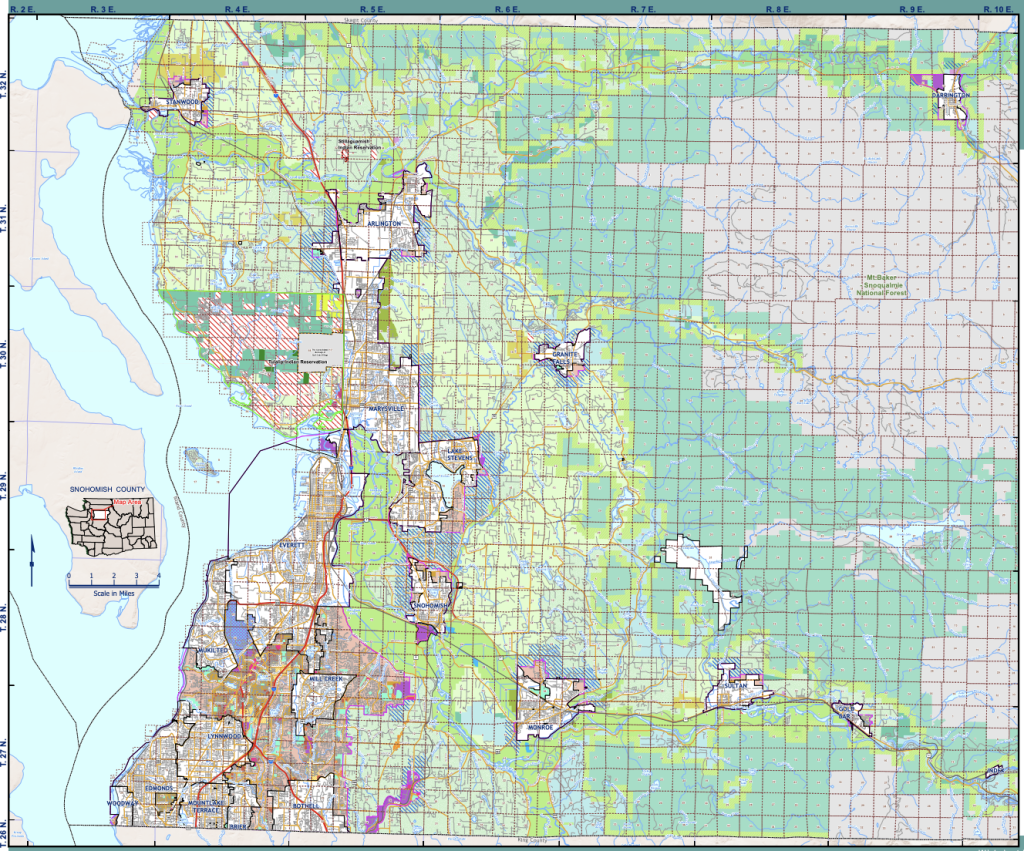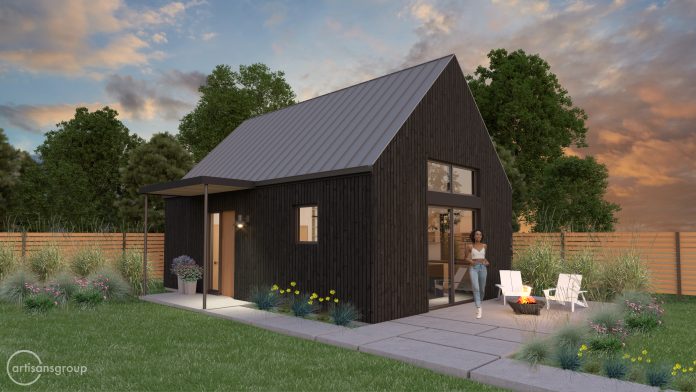Snohomish County’s long-awaited reform of accessory dwelling units (ADUs) has finally come to pass. Yesterday, the Snohomish County Council voted unanimously to pass a package of ADU regulatory reforms for both urban and non-urban unincorporated areas of the county where some 369,000 residents live — two-thirds of whom are in urban areas. Key highlights among the reforms are two ADUs per urban lot, elimination of owner-occupancy requirements, and no parking requirements for ADUs in urban areas. The package of regulatory reforms were much broader.
The key adopted changes in the county’s ADU regulations (note that “AADU” means “attached ADU” and “DADU” means “detached ADU”) are as follows:
| Snohomish County | Current Regulation | Adopted Changes |
| Number of ADUs | One per lot with a single-family residence, provided that an ADU is not permitted on a lot that has a temporary dwelling unit | In urban zones, one AADU and one DADU are permitted per lot with a single-family residence; and in rural, resource, or other zones, one ADU is permitted per lot with a single-family residence, provided that DADUs are not permitted on lots that do not meet the minimum lot size for the zone and DADUs as mobile homes are only permitted on lots that are 10 acres in size or more |
| AADU Maximum Size | 20% to 40% of the floor area of the primary residence, depending up size, up to 1,500 square, provided that an AADU cannot be less than 360 square feet and the primary residence cannot be reduced to less than 900 square feet | 1,200 square feet, excluding garages, porches, and unfinished basements |
| DADU Maximum Size | 40% of the floor area of the primary residence or 850 square feet, whichever is less, provided that a DADU cannot be less than 360 square feet | 1,200 square feet, excluding garages, porches, and unfinished basements |
| DADU Location | In residential, multiple family, and commercial zones, a DADU cannot be located beyond the primary residence front unless well landscaped or compatible | No longer applicable |
| ADU Parking | One off-street parking space is required | In urban zones, no off-street parking space is required; one off-street parking space is required per ADU in other zones |
| Owner Occupancy | An owner-occupancy covenant must be recorded | No longer applicable |
| Non-Urban Standards | Not applicable | Maximum separation between the primary residence and DADU is generally 100 feet, except for DADUs in a legally constructed accessory structure prior to the ADU reform legislation adoption, and ADUs must use the same driveway as the primary residence |
| Screening | ADUs must be screened with a six-foot high fence or five-foot wide high intensity landscape screening | No longer applicable |
| Substandard Lots | ADUs are prohibited | No longer applicable, except that DADUs are not permitted on lots in non-urban zones that do not meet the applicable minimum lot area |
| Use Authorization | In zones where permitted, an administrative conditional use permit is required | In zones where permitted, the use is permitted outright |
Snohomish County did miss out on other reforms that could have gone further to encourage ADUs in urban areas, such as allowing two AADUs on single-family lots, increasing lot coverage, reducing setbacks, and allowing ADUs for duplexes and townhouses. The county also did not address genuine issues of ADUs being used in rural areas to create massive garages and avoid procedural and regulatory hurdles.
“If we’re looking at affordable housing, green housing, and increasing density, I think it’s critical that we can remove the restriction for the parking spots.”
Snohomish County Councilmember Megan Dunn, who represents District 2 (Mukilteo, Everett, and Tulalip).

During the meeting, there were four amendments to the base legislation that was considered with three of them passing. The county council passed back an amendment to the planning commission that would have allowed the creation of ADUs on smaller lots in rural, resource, and other non-urban zones that do not meet the applicable minimum lot size.
The first amendment that did pass addressed the maximum size of ADUs. This set the universal limit on ADUs at 1,200 square feet, not including other features likes basements and attached garages. It closely mimicked the original staff recommendation to the planning commission last year that had proposed limiting ADUs to 1,000 square feet in urban zones and 1,200 square feet in rural, resources, and other zones. The planning commission, however, pushed for a much higher number at 1,600 square feet, which is on the scale of many single-family homes. But the blended, single limit that the county council settled on brings the standard back to earth and better delineates it from a detached single-family home while promoting it as a more affordable alternative.
A second amendment passed that passed provides more flexibility in the location of DADUs on lots outside of urban areas due to site constraints like the location of existing environmental features and septic systems. It allows DADUs to be located more than 100 feet away from the principal single-family dwelling unit if the constrained site criteria are met.
The third amendment that passed eliminated parking requirements for all ADUs in urban areas. Councilmember Megan Dunn championed this amendment and argued for it during the meeting.
“Based upon research, occupants of ADUs typically own fewer cars than the average household and mandating parking will undermine efforts to boost construction of green, affordable ADU homes,” Dunn said. “Also, parking quotas thwart one of the cheapest forms of ADUs, which is garage conversions and this will also lower the cost because ADU parking spaces are estimated anywhere from $4,000 and $30,000 per spot. I think if we’re looking at affordable housing, green housing, and increasing density, I think it’s critical that we can remove the restriction for the parking spots.”
Council Chair Stephanie Wright disagreed with the policy proposal. She explained her position on why ADUs should have parking requirements claiming that the residents of ADUs “do have less cars, but they don’t seem to have no cars.”
In her full justification for voting against that amendment, Council Chair Wright said: “This [legislation] would require one car and what we’ve seen in [the urban] area is that even though people are using [public] transportation, tend to still have one car and actually a bigger need for parking because they are taking the bus and doing other activities, but like true Washingtonians we like to have our car for weekend recreation and our trips to Costco and other things.” She also added that she’s received many parking complaints in her urban district and was hesitant to support a parking reduction because there hadn’t been a parking analysis conducted.
Despite her disagreement with the policy, the amendment passed 4-1 and Council Chair Wright supported the overall legislation giving the county council an unanimous decision in favor of ADU reform.
Stephen is a professional urban planner in Puget Sound with a passion for sustainable, livable, and diverse cities. He is especially interested in how policies, regulations, and programs can promote positive outcomes for communities. With stints in great cities like Bellingham and Cork, Stephen currently lives in Seattle. He primarily covers land use and transportation issues and has been with The Urbanist since 2014.



